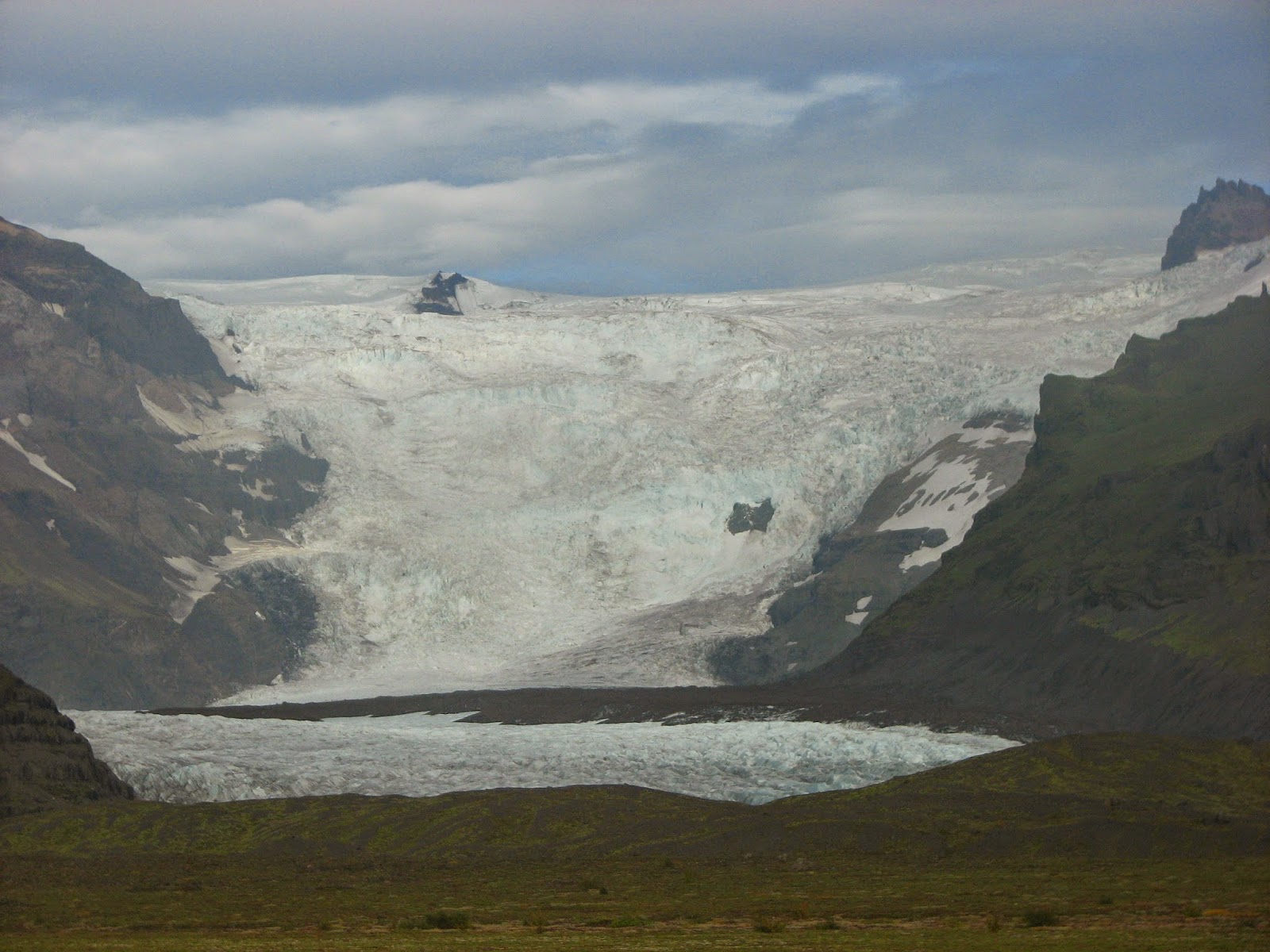..& Ice
Alongside the volcanoes and tectonic plates that form the base of the country it is the ice of the glaciers that carve out the landscape of Iceland. Great ice caps on the mountain ranges slide down the slopes as glaciers and stream out craggy rocks as waterfalls as they make their way towards the ocean.
Our second hotel along our trip sat at the base of the great Vatnajökull,
 |
| Svínafellsjökul |
From our hotel we walked towards the outlet glacier Svínafellsjökull on a small winding path. The
ground was black and littered with gravel and great chunks of ice near us were
sooty from the volcanic ground and dripped into icy pools. We walked right onto
the foot of the glacier but no further as we were without a guide, crampons and
ice shoes. Great crevasses cracked the glacier making it dangerous to proceed
unless you knew where you were going. The glacier was a mass of small peaks and
pools reflecting the mountain above. Slabs of ice were banded with debris and
in places the ice was blue from the sheer volume of ice that squeezed out any
air.
 |
| My mum and I at the foot of the glacier |

We headed to Jökulsárlón, the iceberg lagoon, where icebergs are calved off from Vatnajökull before then drifting out in to the Atlantic Ocean. The lagoon is around 80 metres deep on average and up to 100 metres in places and is growing in size as Vatnajökull retreats. The ice that floats by is around 1000 years old in a mix of fresh melt-water and salt water from the Atlantic. The salt water means the lagoon is largely kept ice-free as salt water needs a lower temperature of around -5 to freeze than fresh water. This was exploited in order to film a car chase in the Bond film Die Another Day where the channel leading to the Atlantic Ocean was plugged. This prevented the salt water entering the lagoon allowing Jökulsárlón to freeze in a couple of weeks.
Jökulsárlón was
impressive and beautiful. Icebergs of all shapes drifted by. Some were white, rugged and
snow-like. Others were blue, having recently flipped over to show the
compressed ice that hadn’t been exposed to the air. Others were clear and
glassy or striped black with volanic dust making them resemble humbugs.
Gulls and fulmars
sat on the ice, unaffected by the cold and common seals swam slowly along. A
lone harlequin duck drifted behind an iceberg as a great skua skimmed through
the air. On the rocky channel that escorts the water and icebergs out of the
lagoon purple sandpipers and turnstone poked around the rocks.
We took an
amphibious craft out onto the lagoon to tour the icebergs. One of the boat
staff brought up a slab of ice, clear and faceted like diamond and chiselled off
pieces for us to eat.
After our boat
tour we followed the icebergs out to sea to the black sand beaches. Here some
icebergs had stranded and small fragments sat on the shore glinting like glass. Close up you could see they had been carved into fantastic shapes by the waves and would look at home in an art gallery.
To me, Jökulsárlón was the highlight of our trip and so it marks the end of my Iceland posts about the landscape here. I still have a little bird quiz to come if someone wants to practise their bird ID skills (we get most of the species I saw in the UK too so it's useful for British Birding) as well as the tale of the Great auk.
I'll end with my two favourite photos of the ice here. I hope they demonstrate how amazing this place is.













No comments:
Post a Comment